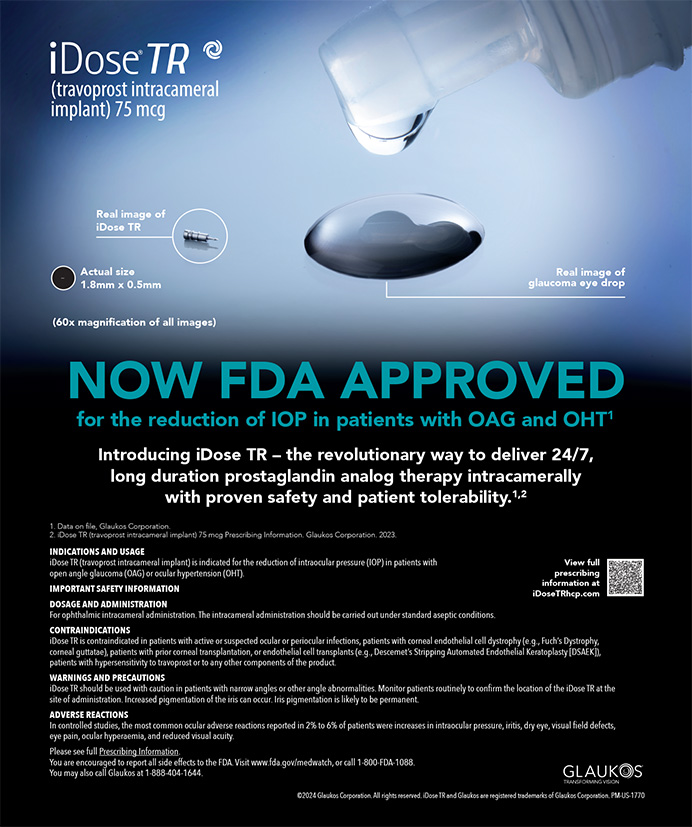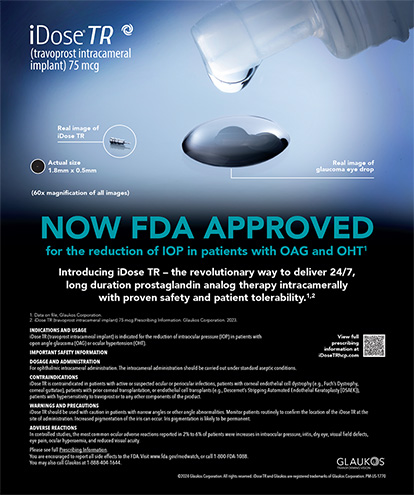If you have been an ophthalmologist for a long time and do not already perform laser refractive surgery, chances are you do not want to start now. Corneal surgery is not for everyone. Many ophthalmologists do not want to deal with the refractive surgery patient, and the startup costs associated with a laser refractive surgery facility can be excessive.
To succeed in today's cataract surgery arena, however, you will have to offer refractive cataract surgery. Presbyopia-correcting IOLs have blurred the line between cataract and refractive surgery. These lenses work well in a narrow refractive range, and their performance is greatly degraded by refractive error, particularly astigmatism (Figure 1). Even very small amounts of astigmatism—from just over 0.25 to 0.75 D—degrade vision. Surgeons who only perform cataract surgery (those who cannot adjust the postoperative refraction because they do not perform laser refractive surgery) are at a disadvantage and may even be unable to build a successful presbyopia-correcting IOL practice.
Patient referrals are the sine qua non of a successful presbyopia-correcting IOL practice. Individuals who wear glasses after spending thousands of dollars out of their own pockets for these lenses are not likely to refer their friends and family. Every patient's eye must achieve focus. For most lenses, that means providing spherocylindrical outcomes that range between approximately -0.50 and +0.50 D (or less) with less than 0.50 D of astigmatism. Biometry and IOL equations cannot provide this level of accuracy, and limbal relaxing incisions are not adequate to manage astigmatism, especially in eyes with greater than 1.00 D of preexisting corneal cylinder.
If you want to succeed as a presbyopia-IOL surgeon, you will probably need to provide laser refractive surgery for a significant number of eyes. Fortunately, you do not have to perform the laser surgery yourself in order to offer it to your patients. In fact, you may be better off sticking with what you do best—great cataract surgery with low complication rates—and partnering with a laser refractive surgeon to provide enhancements to those patients who need them. The ideal refractive surgeon for this arrangement is one who does not perform cataract surgery. Even refractive surgeons who do perform cataract surgery are often willing to provide refractive surgery comanagement for their colleagues, however, and will do so without threatening the cataract surgeon's relationship with his or her patient. The reason is that refractive surgery volumes are currently down, and these surgeons are willing to go the extra mile to keep their own practices afloat. Presbyopia-correcting IOL patients have been a boon to smart refractive surgeons and provide a much-needed boost to their practices. Here is some advice on how to establish successful comanagement.
FINDING A REFRACTIVE SURGEON
Finding a refractive surgeon to comanage your presbyopia-correcting IOL patients is easy if you already have one in your practice, although you may not have established a comanaging relationship due to concerns about money, ego, or both. If that describes you, consider that an in-house arrangement saves everyone money. The more you use your laser, the lower your overhead is per case, which saves currency for the practice. Also, duplicate diagnostic tests can be avoided. An in-house refractive surgeon will likely be willing to perform presbyopia-correcting IOL enhancements for you for at a cost-plus arrangement, usually in the range of $600 to $800 per eye, including the laser fees. If you have delayed working with your in-house refractive surgeon, it is time to approach him or her and set up an arrangement for comanaging your patients.
For surgeons who do not have a refractive partner, the competitive pressures can present an obstacle to approaching a refractive colleague in your community. Having your administrator make initial inquiries can help. Then, you and the prospective surgeons can engage in a frank discussion. As mentioned earlier, refractive surgeons everywhere are facing economic challenges, and many will be eager to work with you.
MANAGING YOUR PATIENTS AND FINANCES
Whether your refractive partner is in house or not, managing your patients and finances will be similar. Once the presbyopia-correcting IOL surgery is complete (usually 3 months postoperatively, according to your preference), send all patients with refractive errors for an evaluation by the refractive surgeon, who will perform LASIK, PRK, or a corneal incisional procedure as needed. The refractive surgeon will see the patient for his or her initial postoperative visits, after which you will resume his or her care. This arrangement reduces the burden on the refractive surgeon (justifying a reduced fee) and keeps you firmly in the patient's mind as the treating physician.
Most economic models for a presbyopia-correcting IOL practice incorporate a cost line for refractive procedures for one-third to one-half of patients. This cost is built into the presbyopia-correcting IOL's price and is not visible to the patient. Because only one-third to one-half of patients will need a refractive procedure, the higher charge to each patient is about one-third to one-half the cost of the refractive procedure. In an informal survey of refractive surgeons offering this service, the going rate for the procedure is about $750 to $900 per eye. Accordingly, you should build $300 to $450 into the price of your presbyopia-correcting IOL procedure to offset costs. Most cataract surgeons pay their refractive partner directly, and the arrangement can yield new presbyopia-correcting IOL referrals from the refractive surgeon, who will pay for the secondary procedure.
CONCLUSION
Declining reimbursements threaten to squeeze the profit out of cataract surgery. Presbyopia-correcting IOLs provide a beacon of hope. If your use of presbyopia-correcting IOLs has been limited because of an inability to control refractive outcomes, then consider working with a refractive surgery colleague. Your confidence in presbyopia-correcting IOLs will grow with better outcomes, and your practice and patients will benefit.
Guy M. Kezirian, MD, is the president of Surgivision Consultants, Inc., in Scottsdale, Arizona. Dr. Kezirian may be reached at (480) 664-1800; guy1000@surgivision.net.


